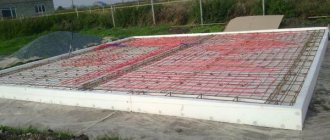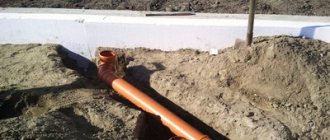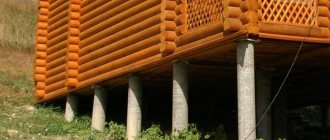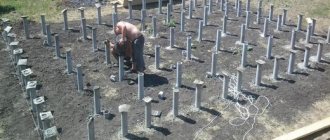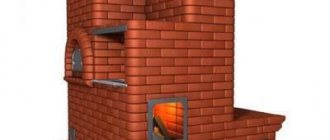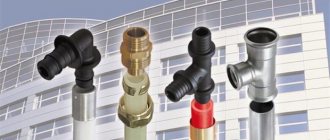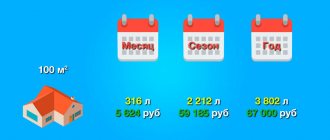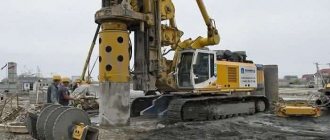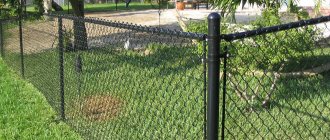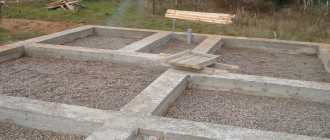In modern construction, structures made of metal-plastic and polypropylene are firmly located next to classic metal pipes. Both types of pipes are used for heating and water supply systems, and before sale they receive a hygienic certificate and permission for use in the construction industry.
Often, owners of houses and apartments are faced with the question, which material for pipes is better? The problem of choice can be solved if we take into account certain operating conditions, personal preferences and material capabilities.
Advantages of polypropylene materials
- They are environmentally friendly.
- Conducts little heat.
- They do not conduct electricity.
- Resistant to corrosive and chemical processes.
- They are light in weight.
- Ease of installation.
- They serve for a very long time (up to 50 years).
- They don't have a high price.
When choosing, first of all, you need to know how the piping system will be used. If it is intended to supply water, the system must withstand significant pressure.
If this is heating, then you need to take into account the higher temperature. If this is a sewer system, then a certain diameter is needed for normal functioning.
After this, you need to calculate the diameter, the required wall thickness and determine whether reinforcement is needed or not:
- For cold water supply, non-reinforced materials are better suited, but the walls must have a certain thickness.
- For hot water supply you will need reinforced pipes. Experts recommend using fiberglass reinforcement.
- For a sewer pipeline, the most important thing is the diameter.
After all this, the moment comes when you need to decide which polypropylene pipe products from which manufacturer are best to purchase.
In the modern market, in addition to domestic manufacturers, you can find goods from Italy, Germany, the Czech Republic, Turkey and China.
The most popular among consumers are Turkish and Czech pipe products. Although German manufacturers have the highest quality, their products are too expensive. But the Chinese options do not cost much, but they are not of high quality.
Video
Polypropylene pipes. Where it can be used and where it cannot be used.
Reinforced polypropylene pipes
When it comes to reinforced polypropylene pipes, they have improved technical properties. Such products have an additional layer of aluminum foil or fiberglass.
The operating temperature regime provides for a liquid temperature of up to +95°C with a short-term increase to + 120°C. In addition, such products can withstand high pressure. Thanks to these characteristics, reinforced pipe products can be used in an apartment heating system.
Characteristics of metal-plastic pipes
When deciding which types are better, polypropylene or metal-plastic, you need to thoroughly understand their technical characteristics. So, the first thing to consider is rolled metal-plastic pipes.
When examining the MP workpiece in section, a composition consisting of five layers is visible. These are: cross-linked polyethylene, glue, aluminum foil, a second layer of glue, and another layer of cross-linked polyethylene.
Any product made of metal-plastic is durable and reliable in use, and their service life lasts for decades. In this indicator, they are much better than other analogues. This pipe does not overgrow inside and does not become laminated.
Corrosion does not form on it and salts are not deposited. The material used to make these products is absolutely oxygen-proof, anti-toxic and resistant to the aggressive influence of chemical environments.
When describing the characteristics of this pipe product, one cannot ignore the fact that the polyethylene used in its production does not contain harmful impurities. For this reason, it is quite suitable for organizing the supply of drinking water.
Experts are unanimous in their opinion that MP water supply networks are in many ways better than their “brothers” made of other materials, including analogues made of polypropylene.
Main types of plastic pipes for water supply
The most common types of pipes for installing water supply networks in a house today include:
- polyvinyl chloride;
- polyethylene;
- propylene;
- metal-plastic.
Each material has its own characteristics, advantages and disadvantages, according to which it is used.
The pipeline is installed using special connections - fittings. There are different ones for each type of pipe. Depending on the functionality, the following types are divided:
- transition couplings for connecting two pipes of equal diameter;
- transition couplings for internal or external threads;
- tees with threaded outlet;
- bends and elbows with threaded access;
- flange connections for transition to a metal pipe;
- bends for turning the pipe at a right angle;
- ball valves with transition to thread;
- flange connections with transition to a metal pipe;
- saddle bends;
- gate valves.
Let's try to understand in more detail the advantages and disadvantages of polypropylene and metal-plastic, for which we will conduct a small comparative analysis.
Characteristics of polypropylene products
Previous characteristics show that metal-plastic pipes are an excellent material for water supply, but there is no need to rush to final conclusions; it is too early to decide which options are better than MP or polypropylene, due to the fact that an analysis of the characteristics of PP pipe rolling is ahead.
You can find polypropylene pipes in many areas where rolled pipes are used. These pipe materials, similar to metal-plastic ones, are environmentally friendly products that guarantee the safe execution of technological processes.
The quality of this pipe product directly depends on the source material. Therefore, the greatest achievement was the emergence of polypropylene (random copolymer), which exhibits high-temperature capabilities. In addition to temperature indicators, the elasticity and viscosity of this material has increased. In such a pipe network, water can freeze, and at the same time the pipeline maintains its integrity.
The process of installing a polypropylene pipeline
Installation of polypropylene pipes is carried out using fittings in two ways: threaded fitting and welding. For welding you need a special soldering iron. The operating principle of which is to heat and soften the edge of the fitting and pipe. The heated joints are connected and soldered together as they cool.
Installation of polypropylene pipes
Reinforced profiles require special joint preparation. To form a monolithic joint, the edges are cleared of metal and the second layer of plastic.
Threaded connections are used to create detachable joints, connect polypropylene pipes to metal networks, and connect to faucets and meters. Threaded fittings end with a socket and a spigot on both sides. The thread can be internal or external.
For turns and branches, angles, tees and couplings are used. All connections are welded to achieve a monolithic connection.
Diameters
To properly install a PP or metal-plastic pipeline, you must select the correct diameter.
The most common diameters of MP pipe products are 16, 20 and 26 mm. Manufacturers offer options of 50 mm and more, but they are not often used at home.
To install water supply in an apartment, 16 and 20 mm products are used. For the second option, the cost of fittings is significantly higher, therefore, if the pressure in the network is low, then it is quite possible to limit yourself to a 16 mm range. System performance will not be affected at all.
You also need to be able to choose the diameter of polypropylene pipes. To do this, use a special hydraulic calculation. Purchasing pipes with a large cross-section will be expensive, but with a small cross-section, the water pressure in such a network will be low.
PP assortment is manufactured with a volume from 16 to 1200 mm. The household system works perfectly with products from 16 to 32 mm. And internal sewerage will require pipe rolling of 40, 50 or 110 millimeters.
Resistance to temperature and pressure influences
At a pressure of 10 bar, the optimal operating temperature for metal-plastic is 950C. It should be added that the pressure level at the highest permissible operating temperature is 10 bar. It is important to note that a metal-plastic pipeline can withstand short-term temperature surges of up to 110 degrees, while its integrity is maintained.
Pressure and temperature are the main criteria when choosing PP products, because they directly affect the length of their use. For example, polypropylene PN 10 can operate up to 45 degrees, and at a pressure of 1 MPa, PN 16 operates up to 60 degrees at a pressure of 1.6 MPa.
PN 20 can be used in the mains for supplying hot water, because it operates up to 95 degrees at a pressure of 2 MPa. PN 20 can withstand the same temperature and pressure of 2.5 MPa.
Advantages of polypropylene
- tightness of connections - thanks to this, such pipes can be used in hidden heating and water supply systems, embedded in the floor or walls, without fear that they will leak;
- non-corrosion and long service life - 50 years;
- high mechanical strength;
- constant internal diameter throughout the entire service life - the smoothness of the internal walls prevents the appearance of scale and various deposits;
- good sound insulation - you can’t hear the sound of water in the pipes;
- fairly simple and quick installation - the process of welding joints takes minimal time;
- absence of interaction of the material with chemically active substances - does not affect the composition of water, without changing its taste, smell and color;
- environmental friendliness - polypropylene is absolutely harmless to humans, and its processing does not harm the environment;
- high plasticity and expansion ability - pipes withstand freezing and after thawing return to their original shape and size without deforming or bursting;
- relatively low cost.
USEFUL INFORMATION: How to screed a floor with expanded clay with your own hands: recommendations
Thermal expansion and heat transfer
The linear expansion of metal-plastic is small and equals 0.026. But ordinary polypropylene has a linear increase rate of 0.15. This must be taken into account when performing installation. Reinforced polypropylene types are characterized by a reduced linear increase rate; their rate is 0.03.
The method of compensating for linear expansion is chosen based on the material’s resistance to heat. For these reasons, compensation options for reinforced pipe products differ from compensation methods for conventional polypropylene.
In order for the PP and MP main to evenly warm the house, it is necessary to correctly calculate its heat transfer. For example, metal-plastic is characterized by heat transfer 175 times lower when compared with steel. And the coefficient for metal plastic is 0.36. Also, special formulas are used to accurately calculate this value.
Polypropylene is characterized by a thermal conductivity of 0.23 W/m*s. If compared with steel, it is twenty times lower.
When calculating the heat transfer coefficient, special formulas are also used, taking into account the temperature of the transferred medium and the ambient temperature.
Resistant to mechanical damage and oxygen penetration
Although aluminum and cross-linked polypropylene exhibit a high level of resistance to mechanical stress, they should be bent with extreme caution. When installing, experts recommend using a special pipe bender.
If you exceed the permitted bending rate, the reinforcing layer breaks and the tightness is lost. As a rule, the largest bend radius is indicated by manufacturers.
It is also important to note that the aluminum layer creates a diffusion barrier for the penetration of oxygen.
If we turn our attention to polypropylene, it is important to emphasize that this material perfectly withstands mechanical stress and even shocks. It can withstand deformation for some period without collapsing. This is facilitated by the viscosity of polypropylene.
This material also has good protection against oxygen. Polypropylene itself is not afraid of contact with oxygen dissolved in water, but this can seriously damage the metal parts of the system. This causes corrosion, which leads to rapid wear of the boiler or radiator.
For these reasons, I consider the best option to be an assortment where a continuous layer of aluminum foil is used for reinforcement, rather than perforated.
Advantages and disadvantages of PP and MP materials
The metal-plastic pipeline exhibits many positive characteristics. Among them:
- no overgrowth from the inside;
- resistance to corrosive formations and chemical environments;
- excellent throughput characteristics;
- low weight and plasticity.
This list can be continued for a long time, but for all its advantages, this material is not without its drawbacks. Constant temperature changes can lead to weakening of joints, because the plastic and metal layers have different coefficients of linear expansion.
In addition, metal plastic demonstrates high ductility, but it is not recommended to deform it repeatedly.
Plastic pipe rolling also demonstrates a huge number of advantages:
- ease of use;
- resistance to chemical influence;
- light weight;
- ability to withstand heavy loads.
But, before deciding on the final choice of whether metal-plastic or polypropylene pipes are better, you need to know the disadvantages of this pipe product. They are as follows:
- can be destroyed by exposure to ultraviolet radiation;
- are highly flammable;
- difficult to glue;
- do not tolerate chlorinated solvents well.
Which option is better can only be decided after a detailed study of the pros and cons. It is also necessary to take into account the conditions in which the pipeline will operate. If you have any doubts when choosing, it is better to ask specialists for help.
Pipeline installation
Installation of PP assortment makes it possible to obtain a high-strength connection. For this, a welding machine is used. The whole process turns out to be not very difficult, and even a beginner can do it. But to work you need to stock up on time and patience. Polypropylene will not create installation problems if everything is done according to the rules.
The only disadvantage is that polypropylene does not bend like metal plastic and only fits at right angles. This forces the use of a large number of adapters, which means more time will have to be spent.
When considering the installation of MP systems, it should be noted that they are connected and connected in this situation using special fittings. In this case, there is no need to cut threads, and all work will take a minimum of time. But, in terms of cost, connecting metal-plastic networks will cost one and a half times more.
The MP network also features convenient installation. This range is easily bent, which allows you to supply a minimum number of connecting parts.
What parameters influence the choice
The answer to the question, which pipes are better than PP or metal-plastic, depends on their application. For example, both metal-plastic and polypropylene pipe materials are ideal for water supply.
Perhaps the only drawback will be installation under ceramic tiles. The whole problem is that the metal-plastic water supply network can leak. For this reason, it is not recommended to hide it tightly in the wall. This especially applies to areas where fittings are located.
PP highways, on the contrary, can be hidden. But during installation we must not forget about the gaps for thermal expansion.
The opinion of experts on the question of whether metal-plastic or polypropylene options for heating are better is clear. They claim that the best option for heating is metal-plastic, because when heated it hardly expands. This is especially recommended for heated floors, as this heating option made of polypropylene can simply collapse.
Repair of metal-plastic systems
Metal-plastic demonstrates excellent resistance to corrosion and strength. Therefore, if a leak occurs in an apartment, then the technology may have been violated during installation, or during operation the line may have been under significant mechanical influence. Poor quality of joints may also be the cause. Leaks at fittings are often eliminated by tightening the nut.
What can be done if the pipe product itself is leaking? If such a defect is discovered, then the section of the highway that has become unusable should be immediately replaced. If this cannot be done, then measures must be taken to temporarily eliminate it. Most often, a bandage is used for this. It is not difficult to purchase it in construction stores or make it yourself.
In particular, it should be noted that the MP pipeline, with professional installation and regular maintenance, will last for a long period without leaks, without creating any problems.
Both polypropylene and metal-plastic products have deservedly gained popularity among consumers. Both of these options are endowed with technical characteristics that allow them to be used in plumbing and heating systems.
But, if we briefly summarize everything that has been said, we can recommend the following. If a water supply system is being installed, then there is no significant difference. But for the heating line it is better to take metal-plastic. It is better for a master with little experience to start working with metal-plastic, but when the network runs through the wall, polypropylene is recommended for it.
Pipe rolling from German manufacturers
Their products are not only of excellent quality, but also of high cost. It has a long warranty from the manufacturers, which is ten years.
Each such product has certain production and installation features:
For example, Rehau pipes are laid without soldering. Work with them is also carried out at subzero temperatures. The system turns out to be monolithic because they use the method of cold pressing and a movable sleeve.- Wefatherm products are manufactured in green and white colors, and are distinguished from other products by their smaller wall thickness. Painting in this case prevents the penetration of air and serves as protection from the sun's rays. The small thickness of the walls makes it possible to reduce the weight and price of the product.
- Banninger products are characterized by increased resistance to acid and alkali. When they freeze, they stretch and after defrosting they return to their original size.
Pipe rolling products from the Czech Republic
Ekoplastik pipelines serve not only in everyday life. It can be found in industry and even in agriculture.
The brand from the Czech Republic offers products of different diameters and for any pipelines. Their main advantage is resistance to sub-zero temperatures. They are not destroyed under their influence.
These products are perfectly connected by welding and can be combined with elements from other manufacturers that have a different composition. The connection can also be made using a threaded method.
Plastic materials from Italy
Valtec products are used in gas pipelines, as well as for transporting chemicals or liquids. It is also widely used in everyday communications.
When connecting by soldering, stripping of the elements is not required. They are installed using crimp and press fittings (made from brass, they are considered the most reliable).
Pipe rolling from Turkey
Products from the Turkish manufacturer have been supplied for twenty years and are of good quality. Separately, it should be said about the wide range of choices.
The main advantage of this material is decent quality at a low price. In general, the quality of the products is good, but the disadvantage is the small range of shaped elements.
Products from China
The most popular products are from the Blue Ocean brand, which is registered in the UK. Accordingly, the quality of the products meets all European standards. Experts point out minor errors in diameter as a disadvantage.
Each specific case is considered taking into account the type of pipeline and the financial capabilities of the person. Of course, if you have the funds, it is better to opt for German or Czech goods.
Video
Polypropylene pipes: types, fittings, components. Master class on pipe soldering // FORUMHOUSE
Opinion of consumers and experts
To answer the question of which material is better - metal-plastic or polypropylene, use expert reviews.
Metal plastic is inferior to polypropylene products only in terms of strength and reliability of fitting connections.
Installation of polypropylene elements is carried out by soldering joints using special welding equipment. Heat treatment of products leads to the creation of a monolithic connection. This method of docking guarantees long-term operation of the connection.
The connection of metal-plastic pipes is composite and is made using connecting elements. Installation and dismantling of elements is carried out using special tools. During operation, the strength of the connection gradually decreases. To protect against possible destruction, periodic tightening of the nuts of threaded connections is required.
Polypropylene with glass fiber reinforcement is considered the optimal material for use in heating and hot water supply systems. It is recommended to use unreinforced polypropylene in a cold water supply system.
The need to use connecting fittings when connecting polypropylene products is caused by the high resistance of this material to bending forces.
A metal-plastic pipe can bend at different angles. To prevent possible kinks, a spring mechanism is used.
